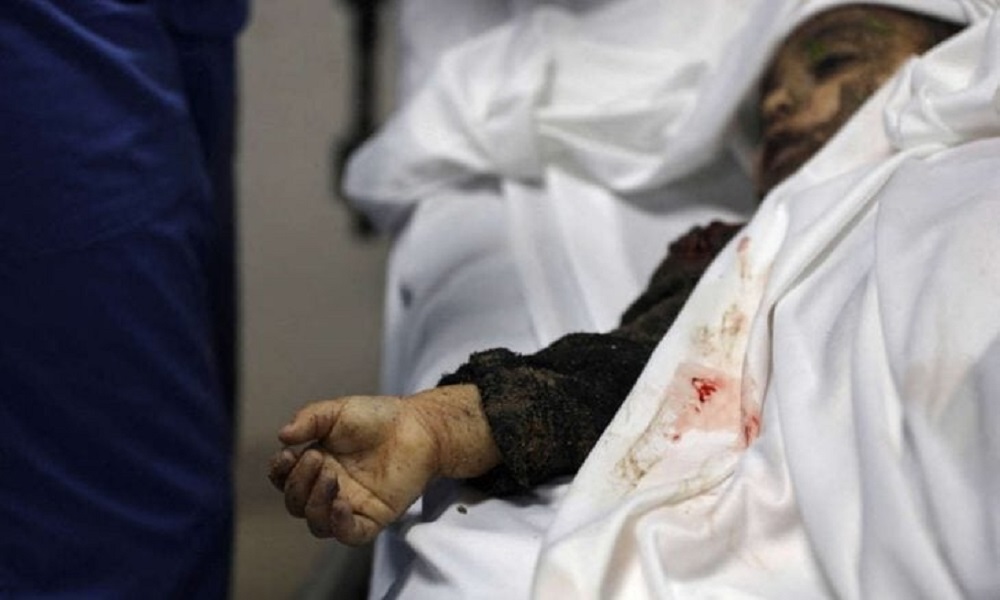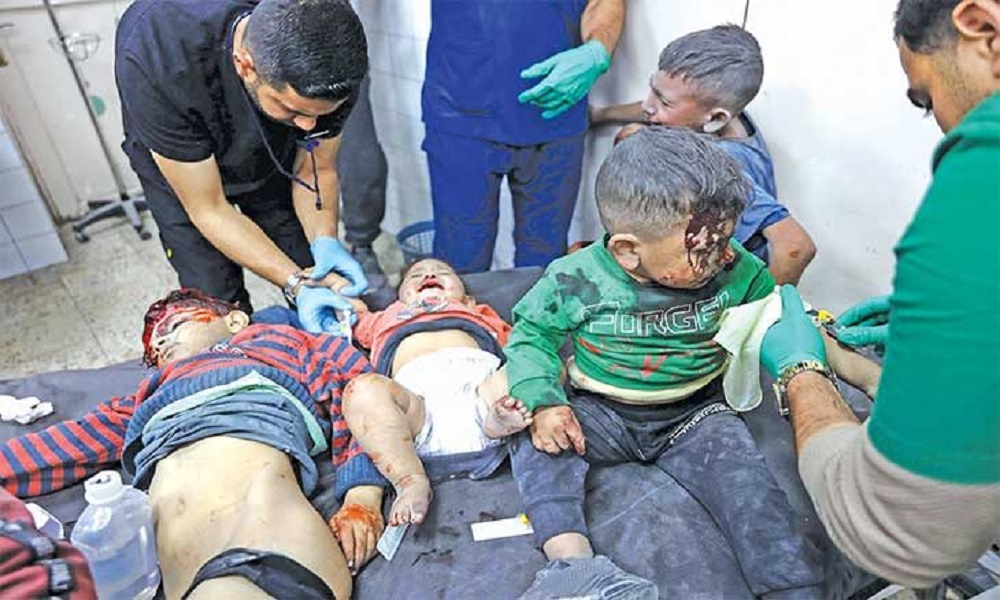30 Days Into Renewed Gaza War: Dozens Killed, Journalist Among Victims as Israel Threatens to Prolong Siege
On the 30th day since the war resumed, Israeli forces ramp up deadly attacks across northern, central, and southern Gaza, leaving mass casualties and widespread destruction.

Watan-Israel has dangerously escalated its brutal attacks on the Gaza Strip on the 30th day since the war resumed, committing multiple massacres that resulted in dozens of casualties. This escalation follows threats from the Israeli military to intensify its warfare and occupy new areas and neighborhoods—particularly in the north—after visits by Israeli Prime Minister Benjamin Netanyahu and Defense Minister Israel Katz.
The Ministry of Health in Gaza reported that 25 people were killed and 89 injured in the past 24 hours. Since the resumption of hostilities on March 18, the total number of deaths has reached 1,652, with 4,391 wounded.
Since the beginning of the war on October 7, 2023, the death toll has surged to 51,025, with 116,432 injured. Many victims remain trapped under rubble or in areas inaccessible to emergency and civil defense teams.

Expanded Invasion in Northern Gaza
In northern Gaza, where the Israeli military is intensifying ground incursions, warplanes bombed a house in Jabalia al-Nazla, killing three civilians and injuring others. Graphic footage showed body parts of the victims scattered across neighboring homes and massive destruction in the area.
The attacks escalated across northern towns like Beit Hanoun, Beit Lahia, and Jabalia, causing further displacement of civilians under heavy artillery bombardment.
Massacre in Gaza City
A major massacre occurred in Gaza City when 11 members of the Hassouneh family, including women and children, were killed in an airstrike on their home on Al-Nafaq Street. Among the victims was photojournalist Fatima Hassouneh, mourned by the Palestinian Journalists’ Syndicate.
Dr. Tahseen Al-Astal, deputy head of the syndicate, criticized the international community’s silence, calling it a form of complicity, and urged action to hold Israel accountable and protect journalists.
Rescue teams faced extreme difficulties retrieving bodies due to the large-scale destruction. The victims were mourned and buried after funeral prayers.
Attacks on Refugees
Another Israeli airstrike killed six civilians in Al-Tuffah neighborhood. In Yarmouk playground, three members of the Rayan family were killed when a tent sheltering displaced people was bombed.
The eastern neighborhoods of Shuja’iyya and Zeitoun also came under intense artillery fire and aerial bombardment. The Israeli military has openly declared plans to expand its operations in these neighborhoods under the guise of increasing their “defensive zone.”

Central and Southern Gaza
In central Gaza, one person was killed in a drone strike targeting a food aid tent in northeast Al-Nuseirat refugee camp, accompanied by artillery shelling near the Netzarim axis. Another drone strike hit northwest Al-Bureij camp, where gunfire was also reported.
In Khan Younis, southern Gaza, heavy attacks targeted displaced persons’ areas. Several people were killed in a strike on a tent in Al-Mawasi, supposedly a “safe humanitarian zone.” Victims were mourned in a sorrowful scene at Nasser Hospital.
Other casualties included two people in Al-Qarara, one wounded from a previous bombing in Khuza’a, a child in a drone strike near Nasser Hospital, and several injuries in gunfire from an Israeli drone in central Khan Younis.
Fishermen were also targeted by Israeli gunfire off the Khan Younis coast, and eastern towns like Abasan al-Kabira faced shelling, with an airstrike hitting a house in Al-Fukhari.
Rafah and Netanyahu’s Threats
In Rafah, where residents face forced displacement, intense air raids and demolitions continued. Smoke was seen rising from destroyed buildings in both eastern and western Rafah.
These escalations followed surprise visits by Netanyahu and Katz to northern Gaza. Netanyahu declared: “Hamas will receive more and more blows,” insisting that the military pressure will continue until all war goals are achieved. Katz threatened a broader expansion of operations across Gaza if Hamas doesn’t release the hostages.
Israeli Chief of Staff Herzi Halevi approved new offensive and defensive plans. Israeli military sources told Army Radio that the army now controls 30% of Gaza’s territory.
Meanwhile, Israel released ten Palestinian prisoners from Gaza who were detained earlier in the war. They were returned through the Kerem Shalom crossing to the European Hospital in Khan Younis, often in poor health due to torture and starvation.

Palestinian Response
The Islamic Jihad’s armed wing, Saraya al-Quds, said its fighters shelled Israeli forces in the Netzarim axis with mortar fire in response to the ongoing crimes.
Siege Tightens
Israel’s Defense Minister declared, “No humanitarian aid will enter Gaza,” rejecting reports of possible aid entry via civilian companies. Since March 2, Israel has imposed a full blockade on Gaza, preventing food, medical supplies, or fuel from entering—further worsening famine and disease.
Despite this, the UN agency UNRWA continues to provide healthcare and psychological support through 8 health centers and 39 medical points. However, medicine is running out, and the agency has urgently called for aid to be allowed in.
WHO Director-General Tedros Adhanom Ghebreyesus also demanded immediate humanitarian access to Gaza and an end to the siege, stating that attacks on hospitals are stopping patients from seeking care out of fear for their lives.






